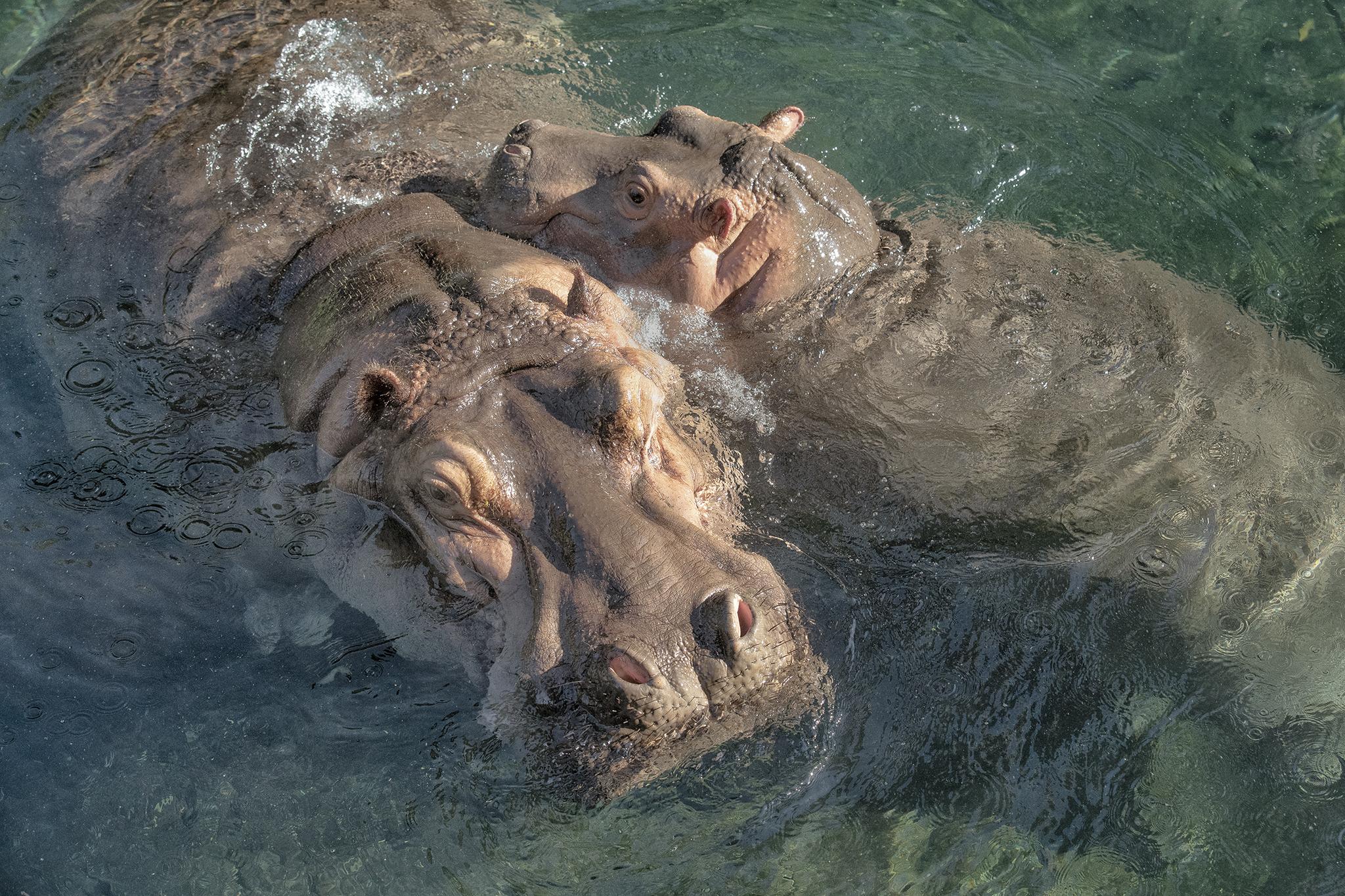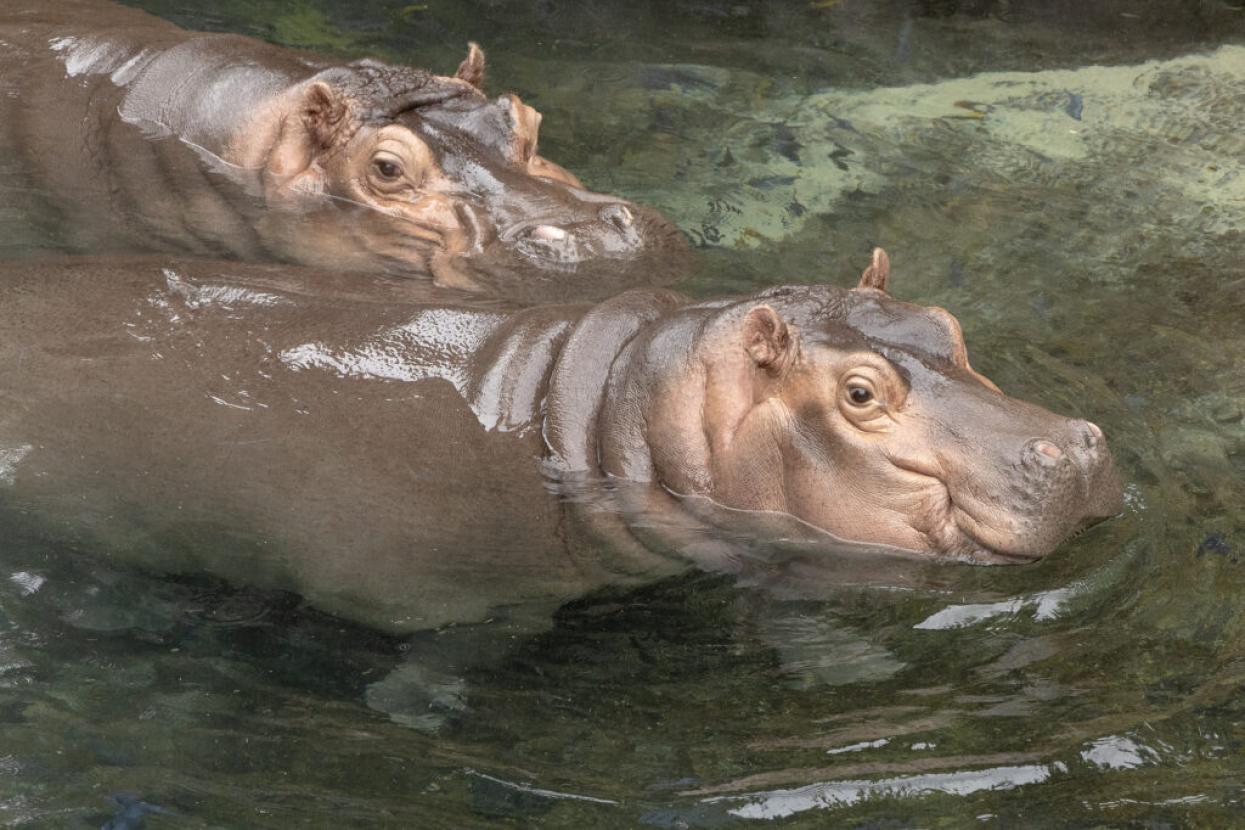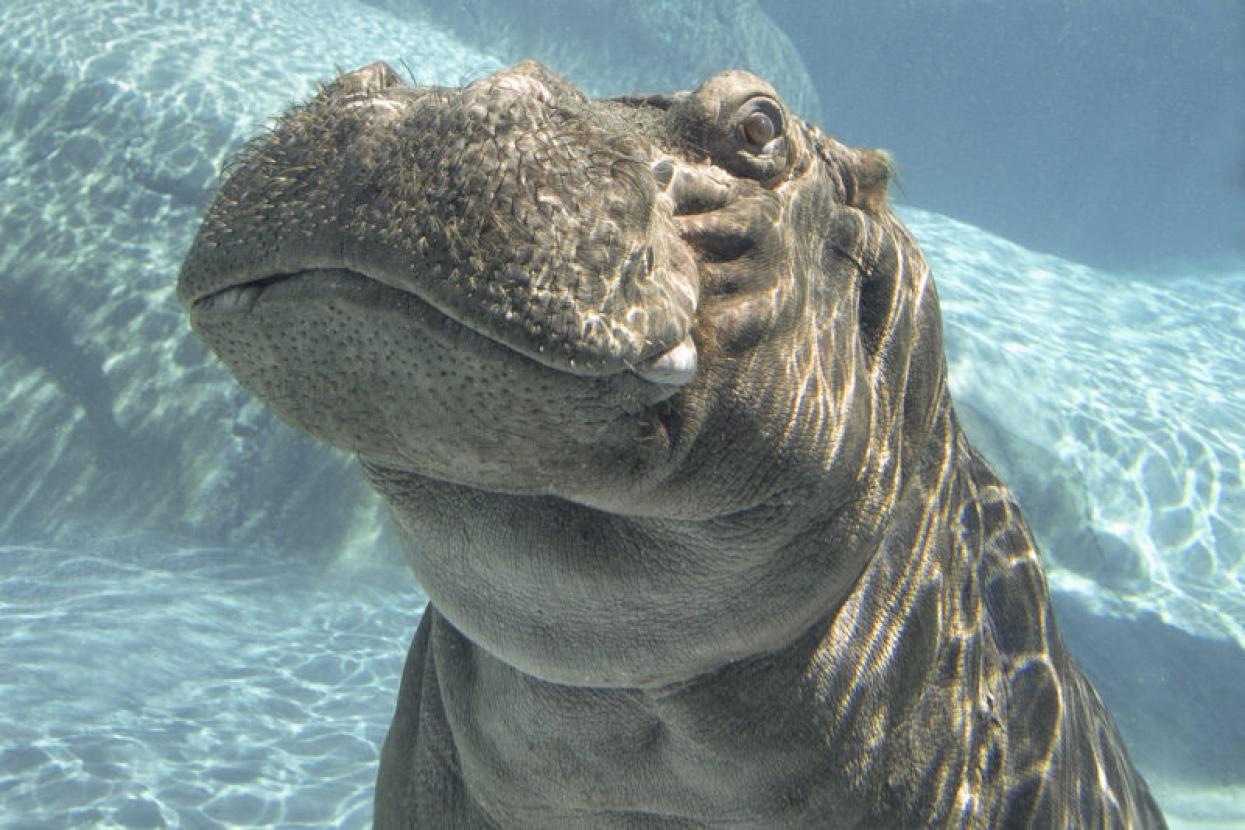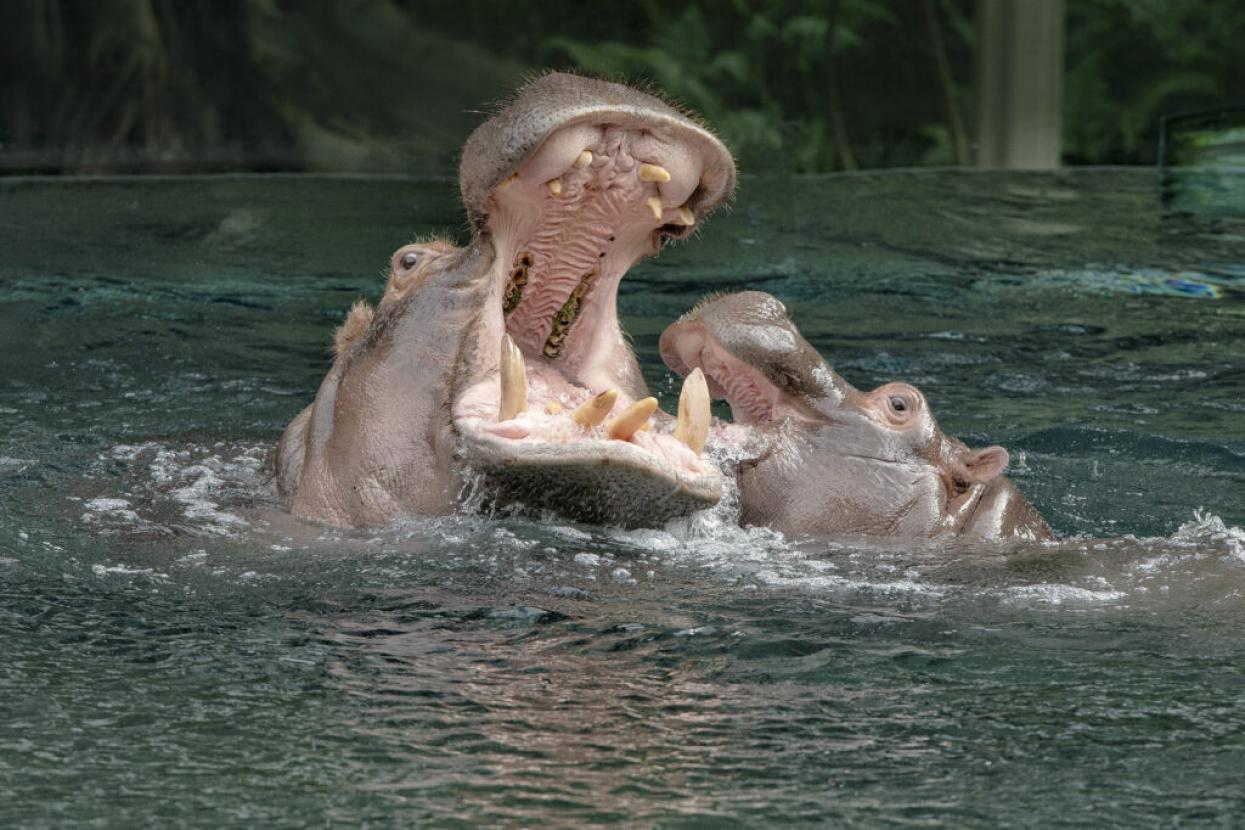
A Deeper Look At River Hippos
For decades, river hippos have played a big role for our organization. In 1936, guests were awed by the arrival of the San Diego Zoo’s first river hippo, Puddles, a one-year-old genial giant who actively sought attention and often turned somersaults in his pool. Few people at the time had seen this species “in person,” and his presence helped keep the Zoo’s gates open during the lean years of the Great Depression. Rube and Ruby arrived as a pair four years later, and were still living there in the early 1980s. Since then, numerous other river hippos have come to live—and reproduce—at the San Diego Zoo, becoming ambassadors of sorts for hippos in their native habitat.
People are drawn to hippos for many reasons, from their size and shape to their reputation as the most dangerous land mammal in Africa. All these reasons—and more—explain why we can’t help but observe hippos with what Jen Chapman, a senior wildlife care specialist at the Zoo, calls “wonder and excitement.” And the San Diego Zoo’s newly upgraded Hippo Habitat is the perfect place to spend some time getting to know the resident hippo duo, Funani and her female calf, Amahle (pronounced ah-MA-shleh”).
With the location of the eyes, ears, and nostrils—along with other adaptations—hippos are specially suited to spend a lot of their time in the water.
Not a Horse, Of Course
Despite the fact the word “hippopotamus” comes from a Greek word meaning “water horse” or “river horse,” the river (or common) hippo Hippopotamus amphibius is not related to equines—its closest living relatives (besides pygmy hippos) may be pigs or whales and dolphins. These well-rounded mammals are easily identified by their gray-to-brownskin, barrel-shaped body, short legs and tail, and huge head. Their size also makes them hard to miss—although they start life at less than 100pounds, at adulthood, male river hippos can weigh more than 9,000 pounds, while females average 3,000.
Native to sub-Saharan Africa, river hippos are found in and around lakes, rivers, and mangroves, and are built for life in the water. With their eyes, ears, and nostrils on the top of their head, hippos can hear, see, and breathe while most of their body is underwater. Hippos are equipped with a set of built-in “goggles”: a clear membrane covers their eyes for protection while still allowing them to see when underwater. Their nostrils close, and they can hold their breath for up to 30 minutes. Hippos can even sleep underwater, using a reflex that allows them to bob up, take a breath, and sink back down without waking up.
Despite all these adaptations for an aquatic life, hippos can’t swim—or even float. The density of their bodies makes floating impossible, so they move around by pushing off from the bottom of the river or simply walking along the riverbed in a slow-motion gallop, lightly touching the bottom with their toes, which are slightly webbed. And as adept as they are in the water, hippos can cover dry ground, too, and are capable of reaching a running speed of 15 miles per hour.
As unofficial ambassadors for their species, Funani (left) and Amahle help spread the word about hippo conservation as guests form a connection to these amazing semi-aquatic mammals.
A Day—and Evening—in the Life
During daylight hours, hippos spend much of their time wallowing in shallow water to help keep cool. The hot African sun can be intense, and hippos have built-in protection against its rays. Their bodies produce “blood sweat” that is neither blood nor sweat—it’s a reddish mucus. When it dries, it crystalizes, creating a layer that locks in moisture and helps decrease their rate of dehydration when out of the water. Blood sweat also reflects the sun’s rays like sunscreen and has antiseptic properties to aid in healing wounds. In the evening, after the hot sun has set, hippos come out of the water for about six hours of grazing. Despite their enormous weight, hippos eat an average of only 88 pounds of food a night, which equals about 1 to 1.5 percent of their body weight. By comparison, the largest cattle eat 2.5 percent of their bodyweight each day.
The African wilderness can be unpredictable, and there are dangers hippos must face. Disease and drought are possible, as is predation by crocodiles, hyenas, leopards, and lions. While hippos may appear cute, they are considered among the most dangerous and aggressive of all mammals. And should a hippo need to defend itself, or a mother its calf, they are armed—not to the teeth, but with them. Hippos’ canine and incisor teeth grow continuously, with canines reaching 20 inches in length. And unfortunately, these teeth are one of the reasons their population is declining, as hippos are often poached for their teeth as part of the ivory trade. Other challenges river hippos face in their native range are habitat loss and diversion of water for agriculture, which impacts the natural waterways hippos rely on. River hippos are listed as Vulnerable on the International Union for Conservation of Nature (IUCN) Red List of Threatened Species.

Even though “hippopotamus” comes from the Greek word “water horse” or “river horse,” the river (or common) hippo’s closest living relatives (besides pygmy hippos) may be pigs or whales and dolphins.
At Home in the Lost Forest
At the San Diego Zoo, Funani and Amahle have taken to their refreshed habitat along Hippo Trail in Lost Forest like hippos to water. The aquatic ecosystem features 110 feet of crystal-clear glass for underwater viewing; a new, state-of-the-art water filtration system that can filter the entire pool—up to 210,000 gallons of water—every hour; improved vantage points for guests; and expanded habitat features for the hippos. Greg Vicino, vice president of wildlife care at the San Diego Zoo, sees the hippo home improvement project as a win-win for the hippos and Zoo guests. “This habitat has always been a special place for people to connect with these amazing animals,” he says. “But in line with our mission, we always improve where we can, whenever we can.”
As impressive as the upgrades are, it’s still Funani and Amahle that attract guests to the habitat, Jen notes. “Having the opportunity to work on a great team caring for river hippopotamuses for over a decade has only strengthened my respect and admiration for these amazing mammals. My hope is that guests will have their moment of wonder and excitement, too.”
Dive in to learn more about how we’re working to save, protect, and care for African wildlife across expansive, grassy plains and tropical forests through our Savanna and African Forest Conservation Hubs.






